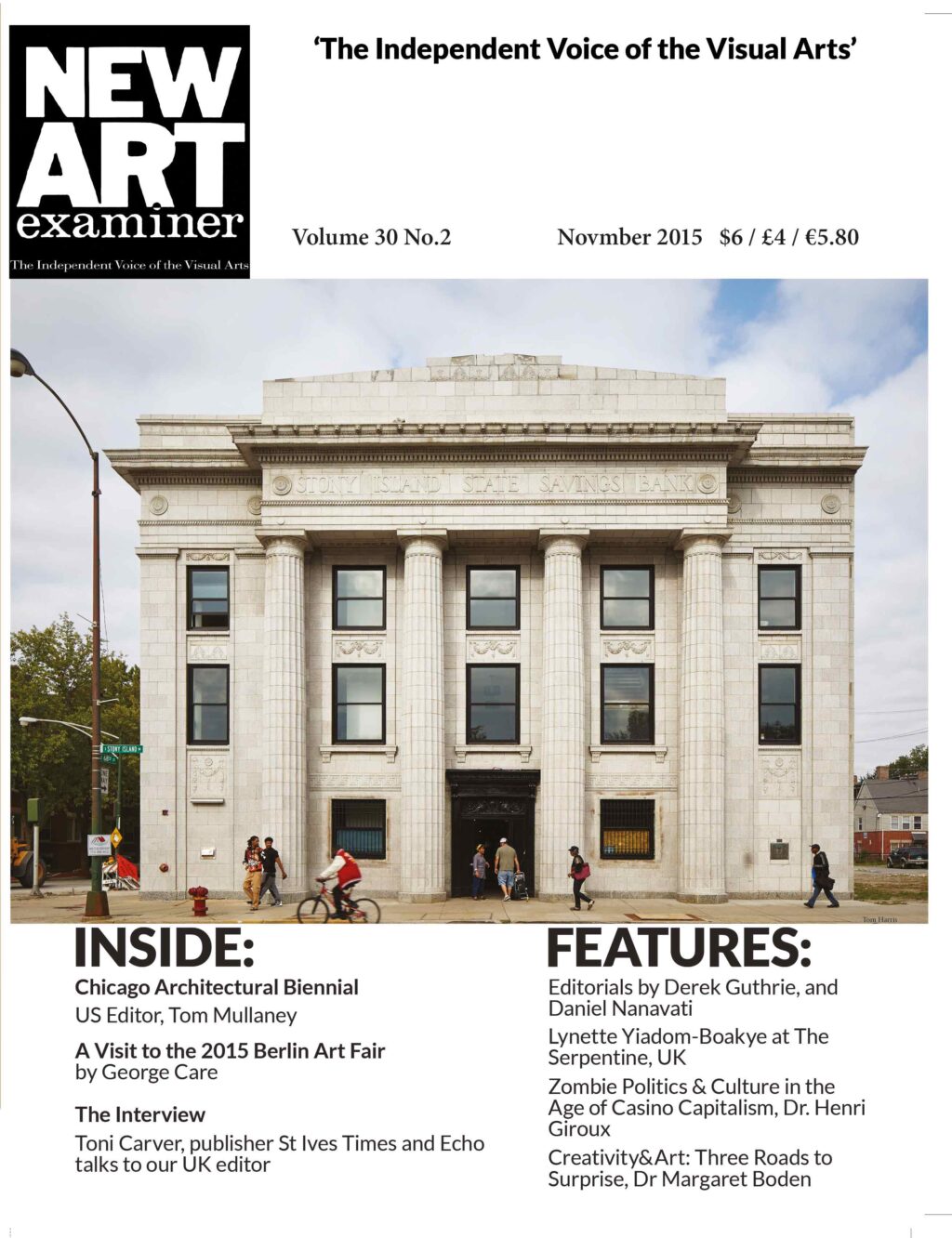
It is nothing new to say that human beings are pattern makers nor that patterns help us to create the structures within which be build society. The art world is such a structure. It relies upon two very important pillars. I am not going to say one of them is money. There is nothing that doesn’t rely upon money in our nations. Even our politics long ago gave way to being nothing more than arguments over money management.
The first pillar is one of command and control. In this issue you will read about Falmouth Art School that has pretensions to be a university, who have closed courses so as to manage the money making elements of their teaching better. The fact that they have closed their contemporary crafts course which has a long illustrious history, seems, and is, an invidious, corrupting decision.
If you teach art you should want your students to understand the entirety of their subject. But the roundness of the art education in the UK of the 1960s has long gone. It might be that crafts are not as sought after by collectors as other art forms and it might be there is not so much money to be made in crafts … I don’t know. What I do know is there will be no student graduating from Falmouth who might make the leap (if it is truly needed) with their crafts to make them worth more, to elevate them in the public consciousness into the art market. That an inspired, creative student will make significant what their teachers consider insignificant today. That possibility is now dead.
The second pillar leads from this but is the one that matters more. The artists’s themselves are no more than commodities of teachers trying to recreate the YBA for a new generation, as they were made through Goldsmith College. They are being taught to tilt at windmills and think they are controversial. But they have been made into no more than money makers. Artists used to fight and die in revolutions or, at the very least on occasion, cause them. The corporate control of the modern art scene is as restrictive in who it considers to be artists and who it does not as the old Academies. Students are, to take Professor Henri Giroux’s phrase, winners of zombie degrees churned out on a Brave New World conveyor belt.
Part of this control is the fact, as Toni Carver mentioned in my conversation with him, that curators no longer go out and look at what is being created. Now curators of major institutions only deal with their trustees, donors and collectors. If a new Picasso were exhibiting on the streets of Montmartre they wouldn’t notice.
The discussion of Creativity & Art: Three Roads to Surprise by Professor Boden in this issue fascinatingly suggests that with all our philosophising on art, what will stop artificial intelligence being creative in the way human beings are is the simpler fact that artificial life does not have a metabolism.
Daniel Nanavati UK Edtor
Volume 30 number 2 November / December 2015 p7

